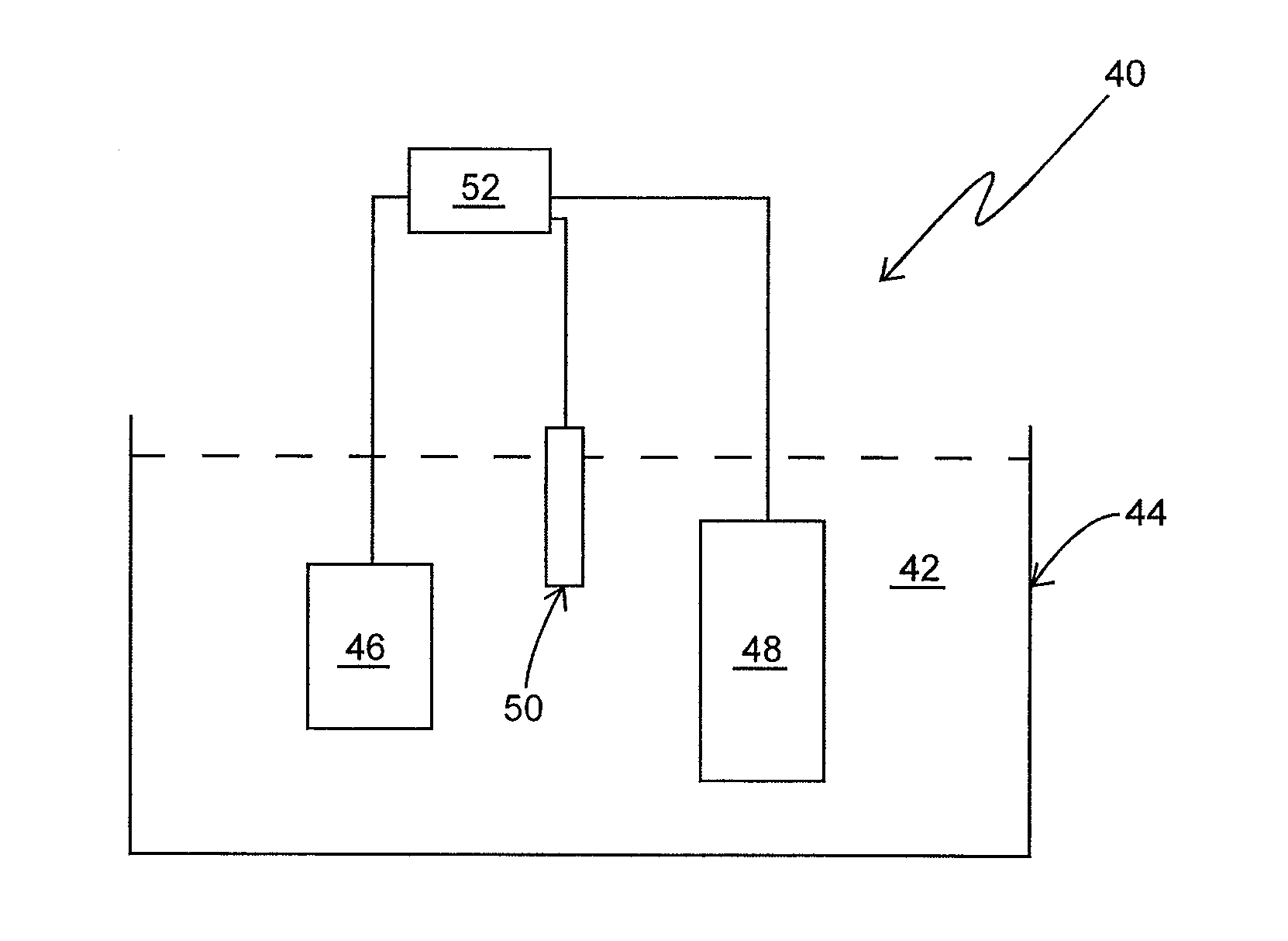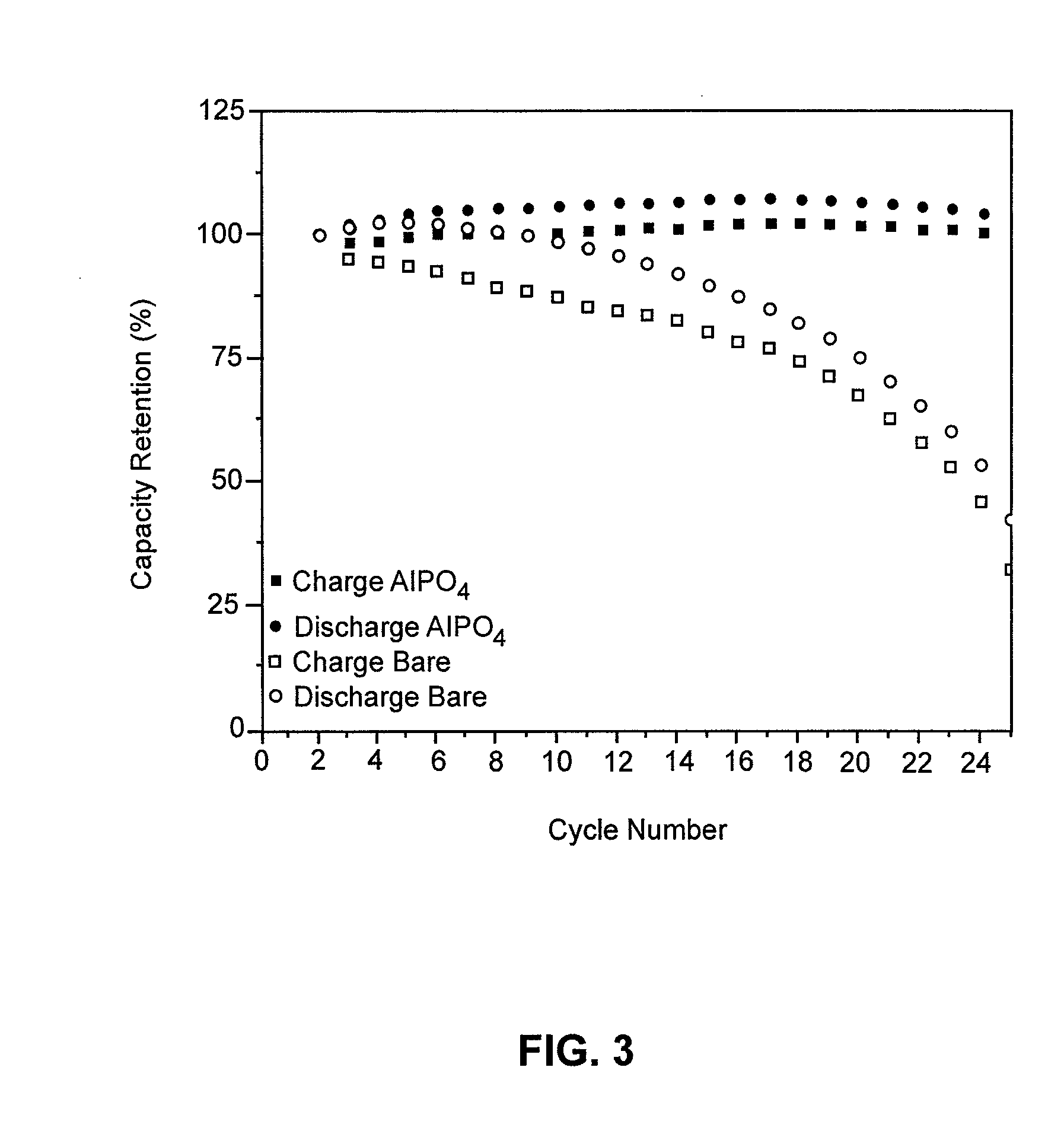Self-assembly of coatings utilizing surface charge
a technology of surface coating and surface charge, which is applied in the direction of electrolysis, diaphragms, electroforming by electrophoresis, etc., can solve the problems that the self-assembly of surface coatings using electrostatic forces has not been widely pursued, and achieves the effect of increasing the thickness of the coating
- Summary
- Abstract
- Description
- Claims
- Application Information
AI Technical Summary
Benefits of technology
Problems solved by technology
Method used
Image
Examples
example 1
[0033]Using electrodeposition, Cu2Sb (an anode material for lithium-ion batteries) was deposited on a copper circular disk with a diameter of approximately 5 cm in accordance with J. M. Mosby and A. L. Prieto, Direct Deposition of Cu2Sb for Lithium-Ion Battery Anodes,” J. Am. Chem. Soc. 2008, 130, 10656-10661. A stainless steel shaft was connected to the disk and installed in apparatus 10 of FIG. 1, hereof. The isoelectric pH of the Cu2Sb was determined using 1 mM KCl as the supporting electrolyte, Ag / AgCl as the reference electrodes, and a spin rate of approximately 750 rpm. The pH of the solution was controlled by adding either dilute hydrochloric acid to lower the pH or dilute ammonium hydroxide to increase the pH. Other reagents may be employed to adjust the solution pH. The isoelectric pH of Cu2Sb was determined to be approximately 7.5 (FIG. 2, hereof).
[0034]The reported isoelectric pH reported for AlPO4 is 4.7 (See, e.g., J. Liu and A. Manthiram, Understanding the Improvement ...
example 2
[0038]The combination of the self-assembly procedure described hereinabove with electrodeposition to increase the coating thickness, is now described with a Cu2Sb substrate coated with AlPO4 as an example.
[0039]In order to increase the solid electrolyte coating thickness using an electrodeposition procedure, the bare electrode material is physically attached to a current collector, such as copper foil. The self-assembled coating is then added using the above-described procedure. Once self-assembly is complete, a counter and reference electrode may be placed in the solution and the electrode material attached to the current collector is made the working electrode. A potential is then applied to the working of the correct polarity with respect to the open circuit potential. The potential polarity will be specific to the electrode and solid electrolyte material, and is applied until the current decays to a desired value, most often approximately zero. The magnitude and polarity of the ...
PUM
| Property | Measurement | Unit |
|---|---|---|
| area | aaaaa | aaaaa |
| diameter | aaaaa | aaaaa |
| thicknesses | aaaaa | aaaaa |
Abstract
Description
Claims
Application Information
 Login to View More
Login to View More - R&D
- Intellectual Property
- Life Sciences
- Materials
- Tech Scout
- Unparalleled Data Quality
- Higher Quality Content
- 60% Fewer Hallucinations
Browse by: Latest US Patents, China's latest patents, Technical Efficacy Thesaurus, Application Domain, Technology Topic, Popular Technical Reports.
© 2025 PatSnap. All rights reserved.Legal|Privacy policy|Modern Slavery Act Transparency Statement|Sitemap|About US| Contact US: help@patsnap.com



